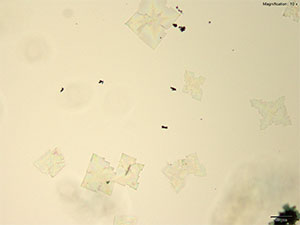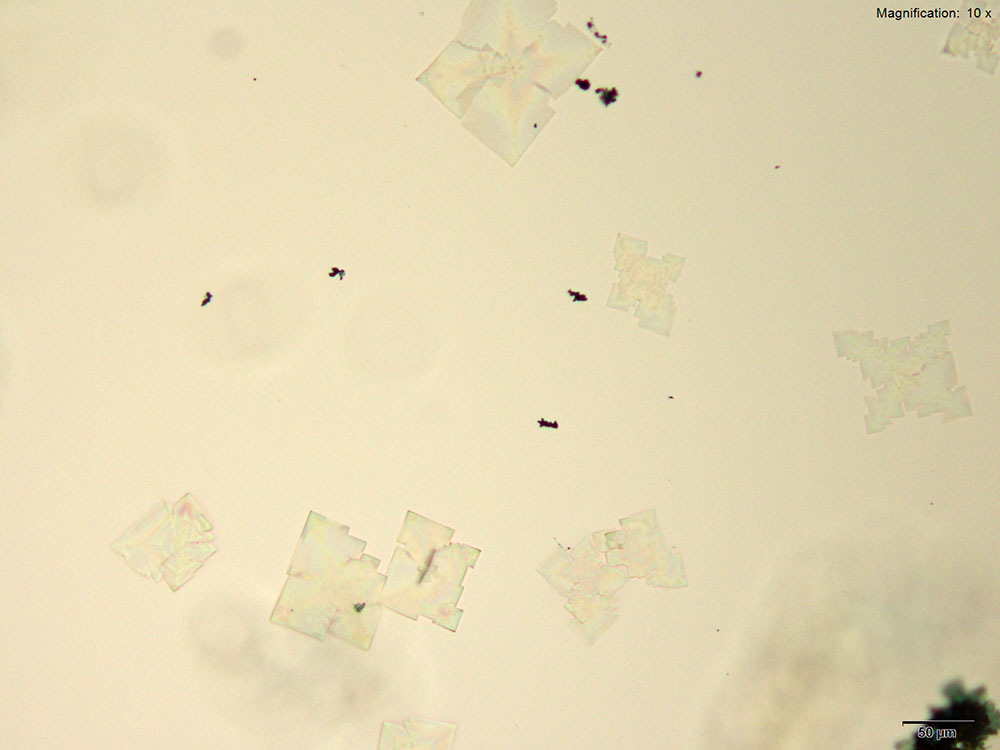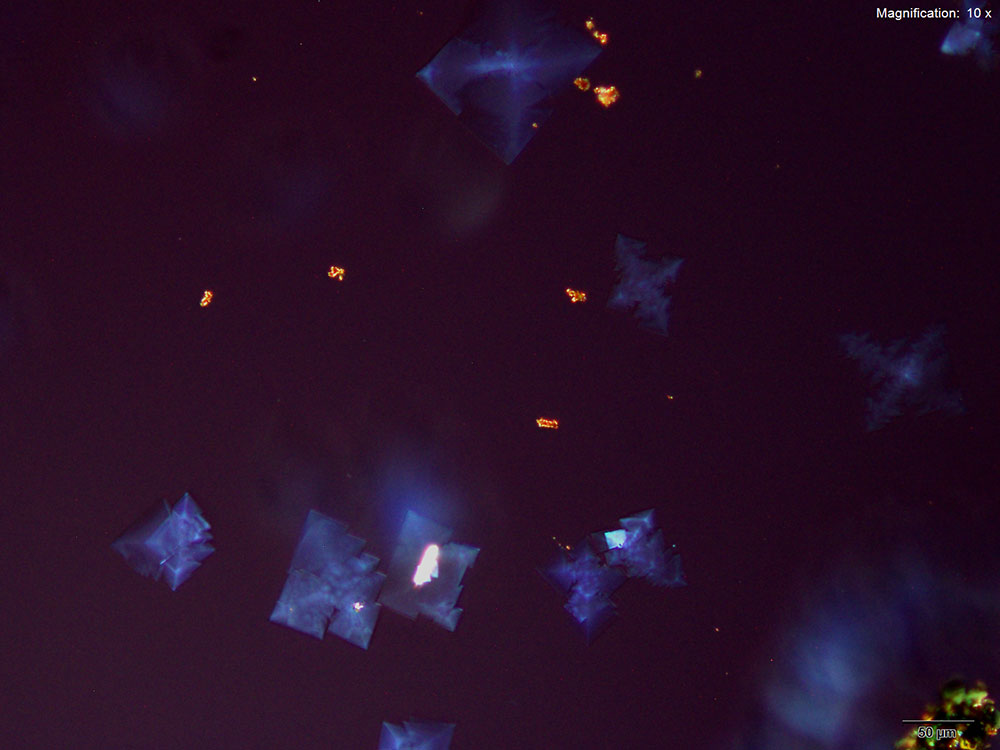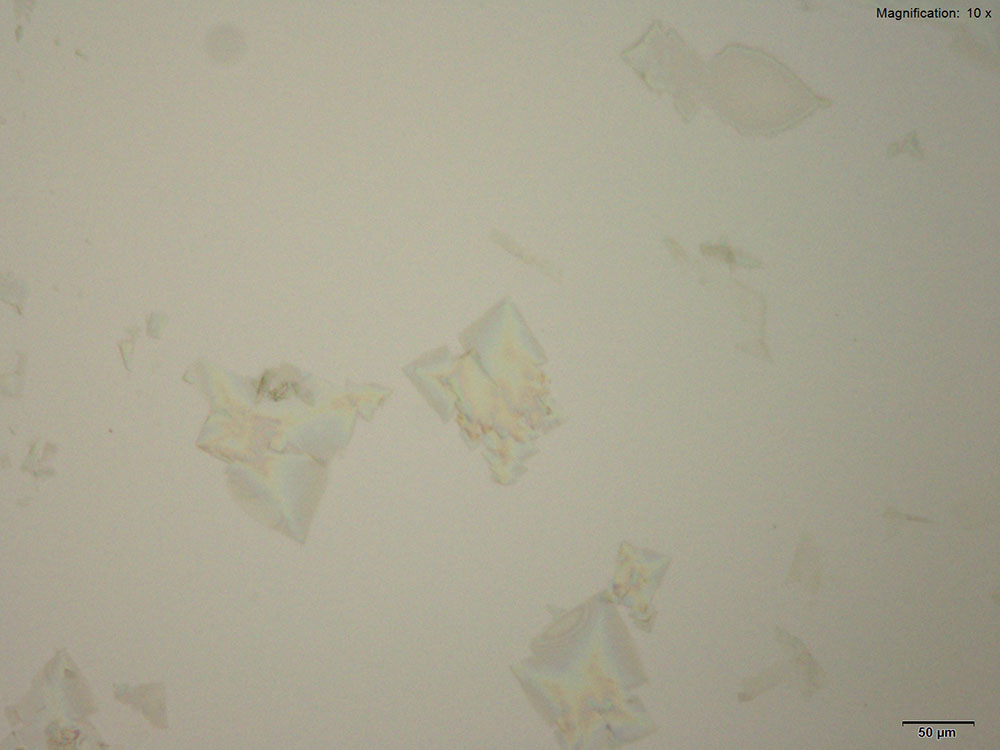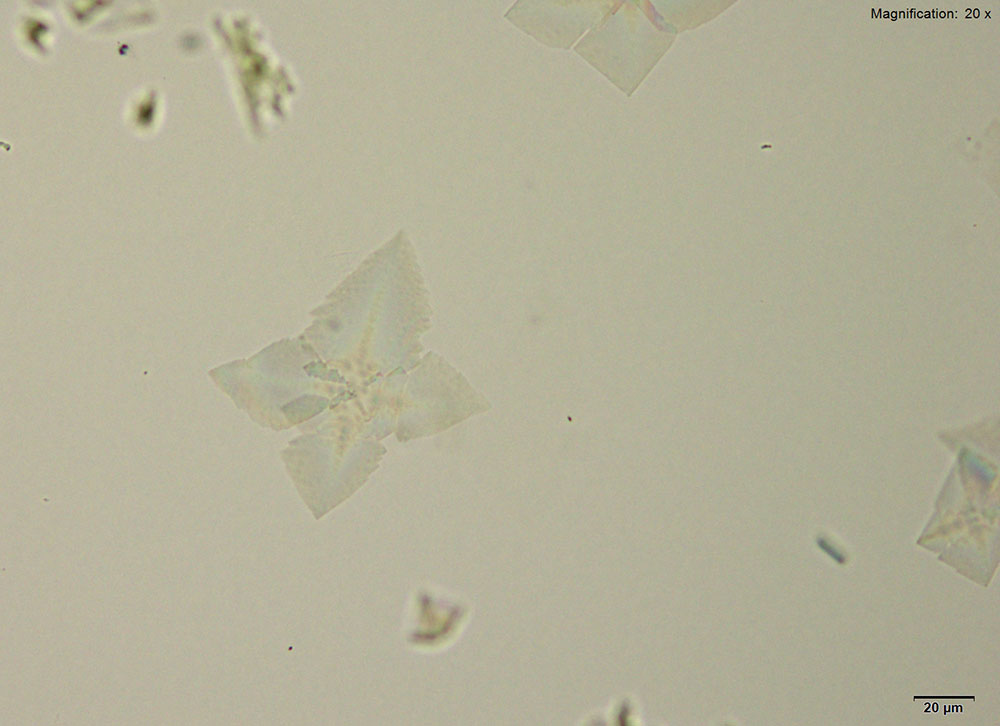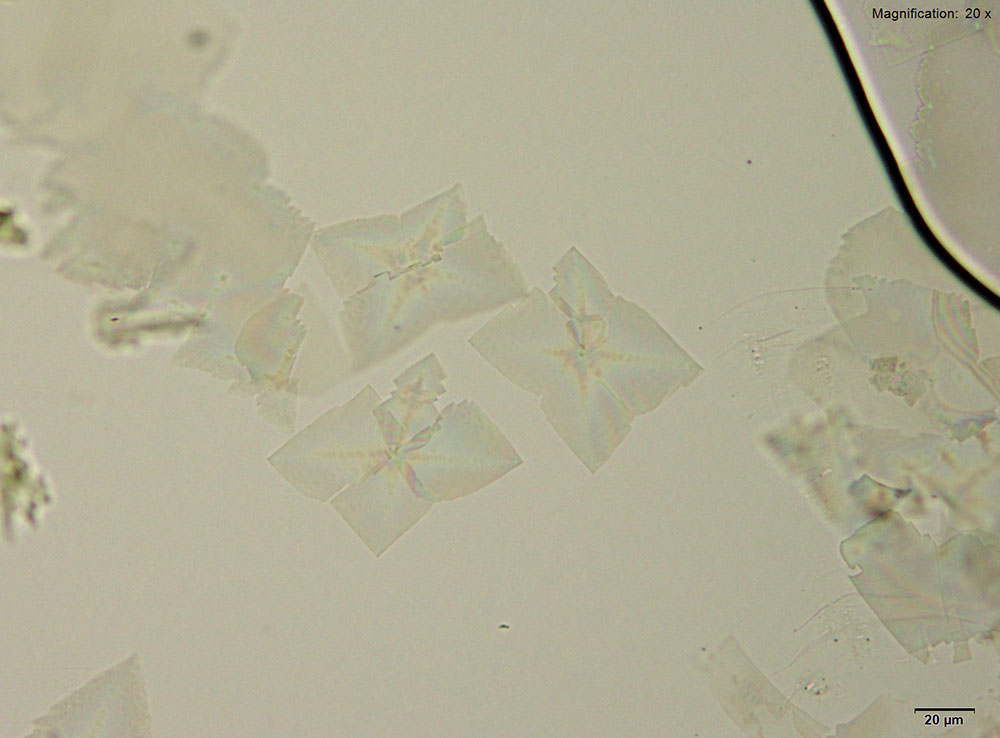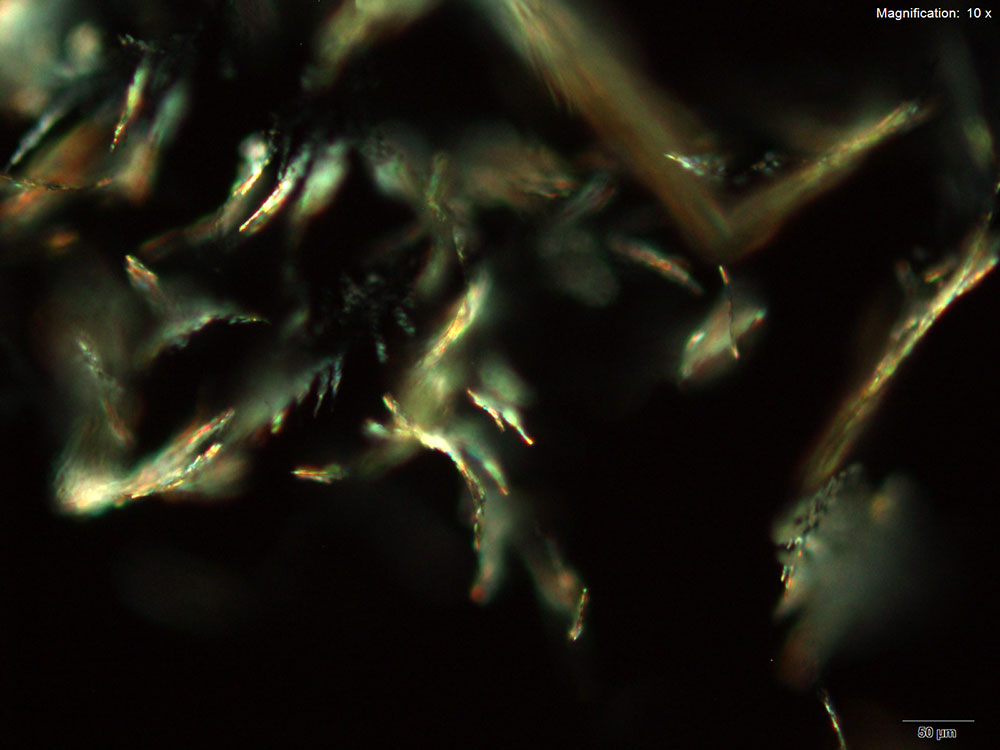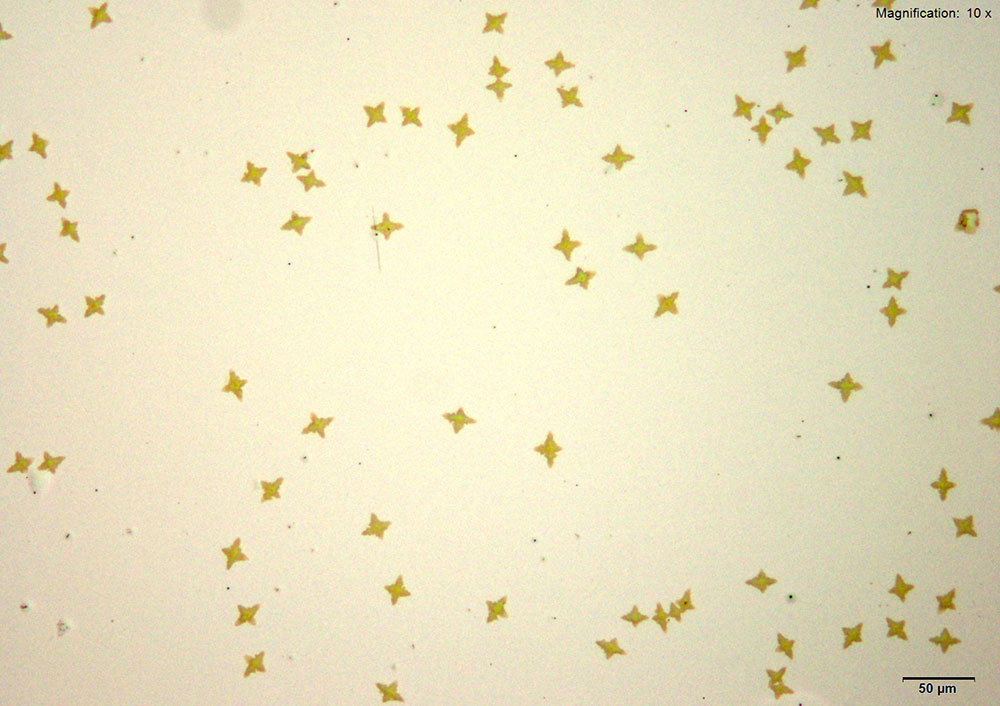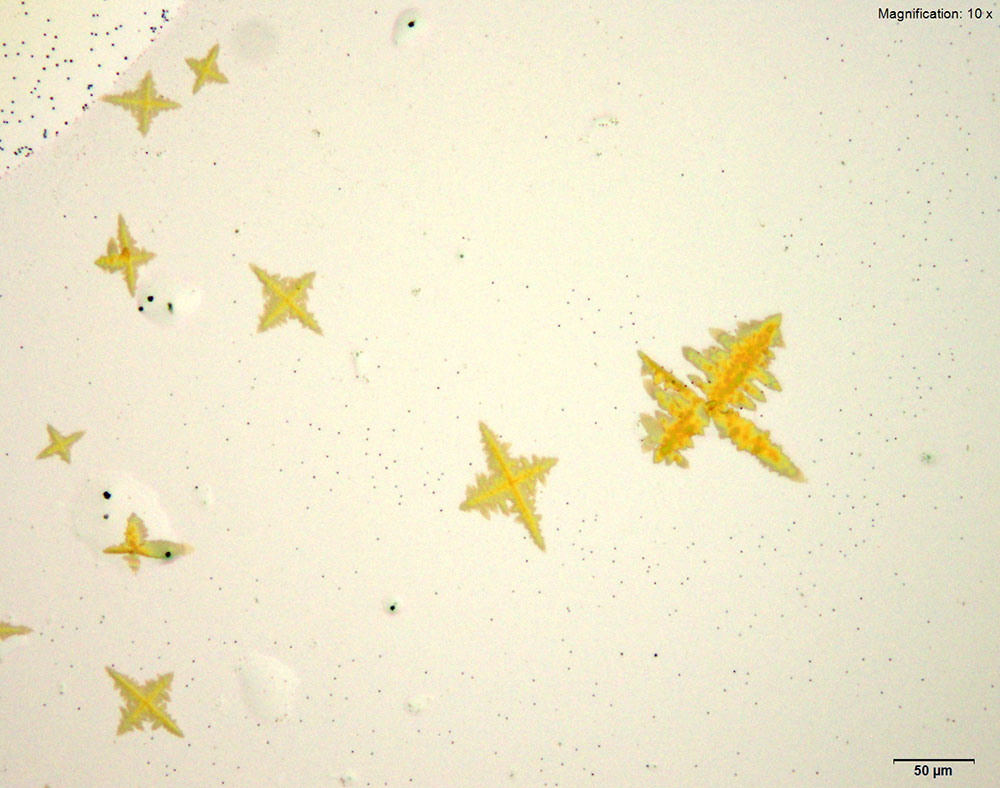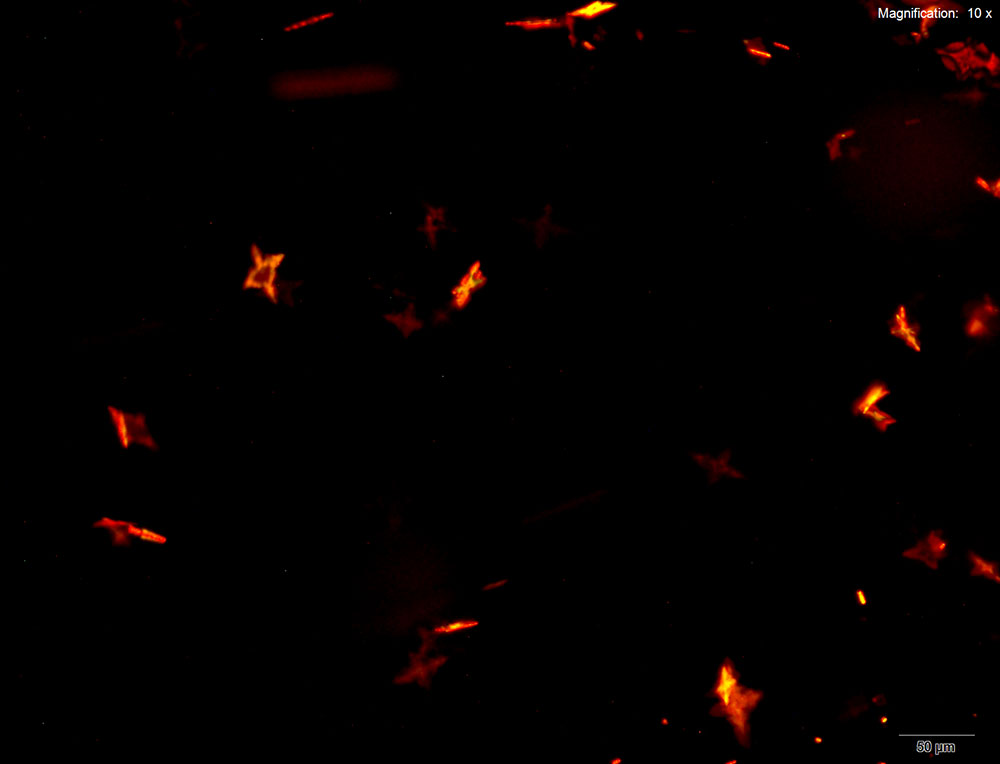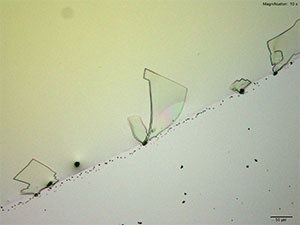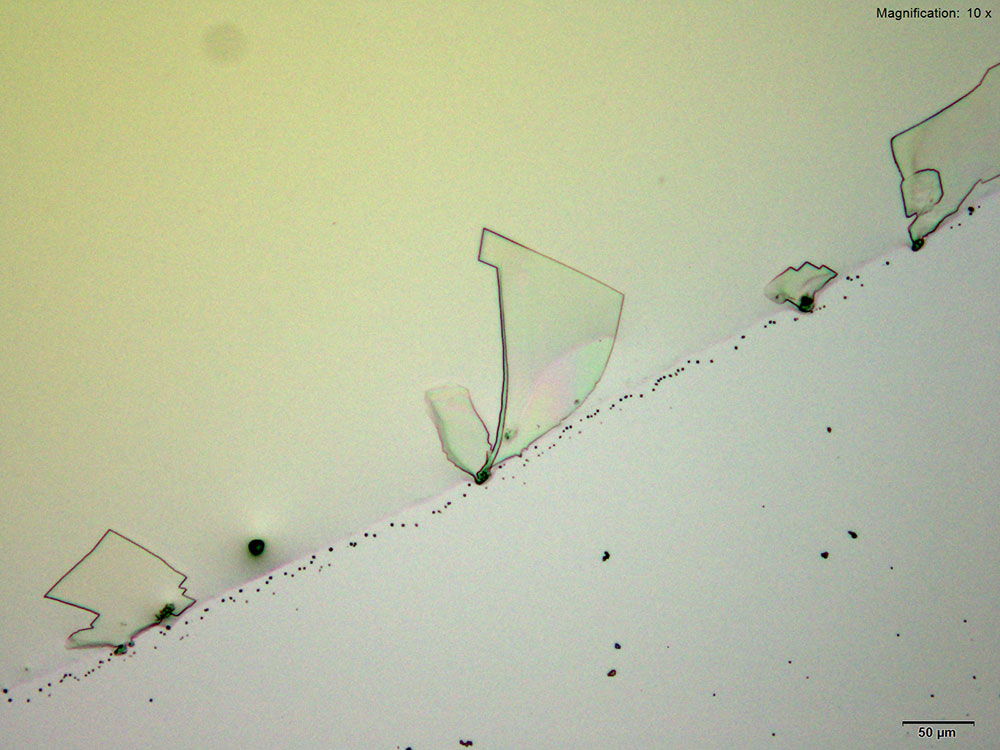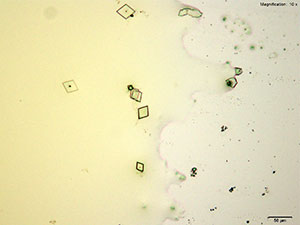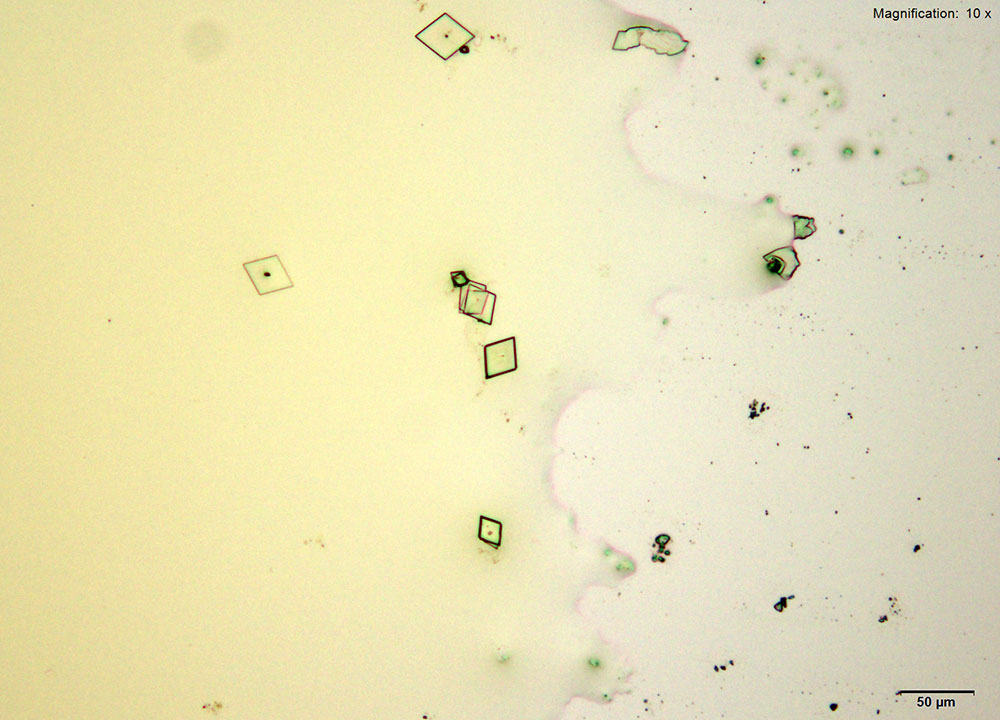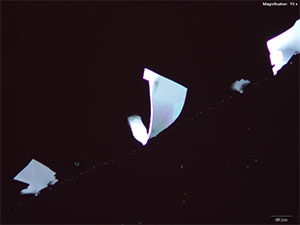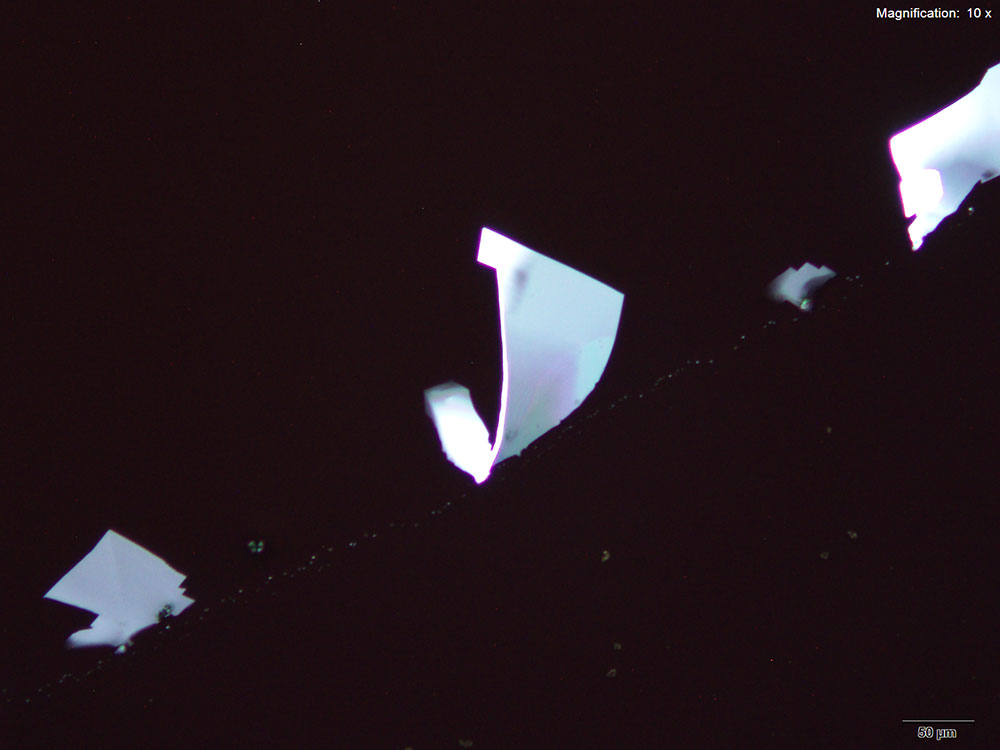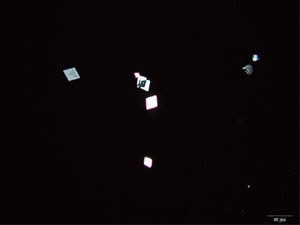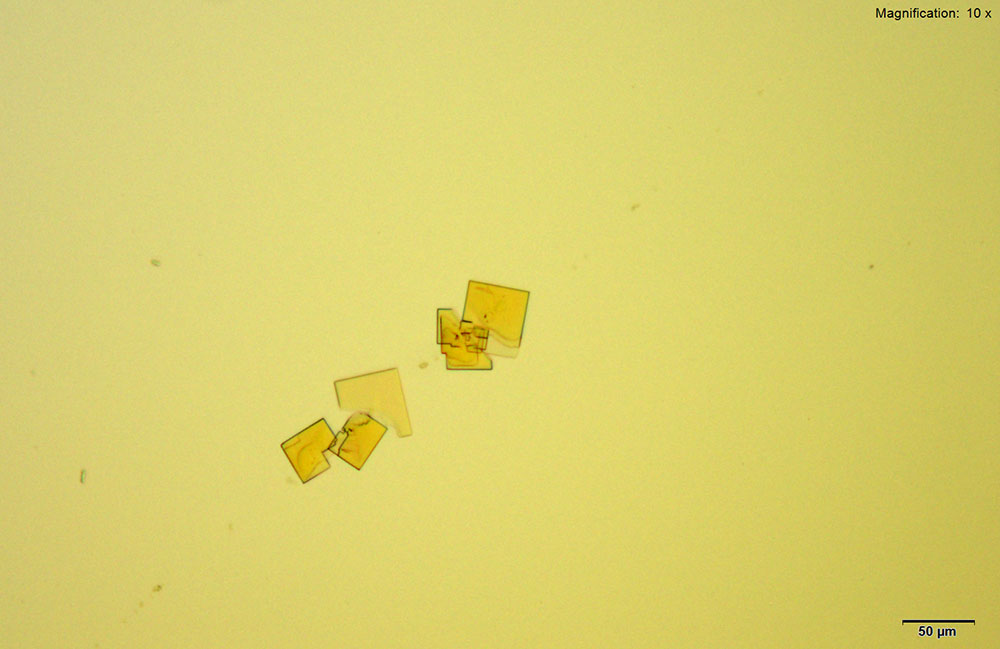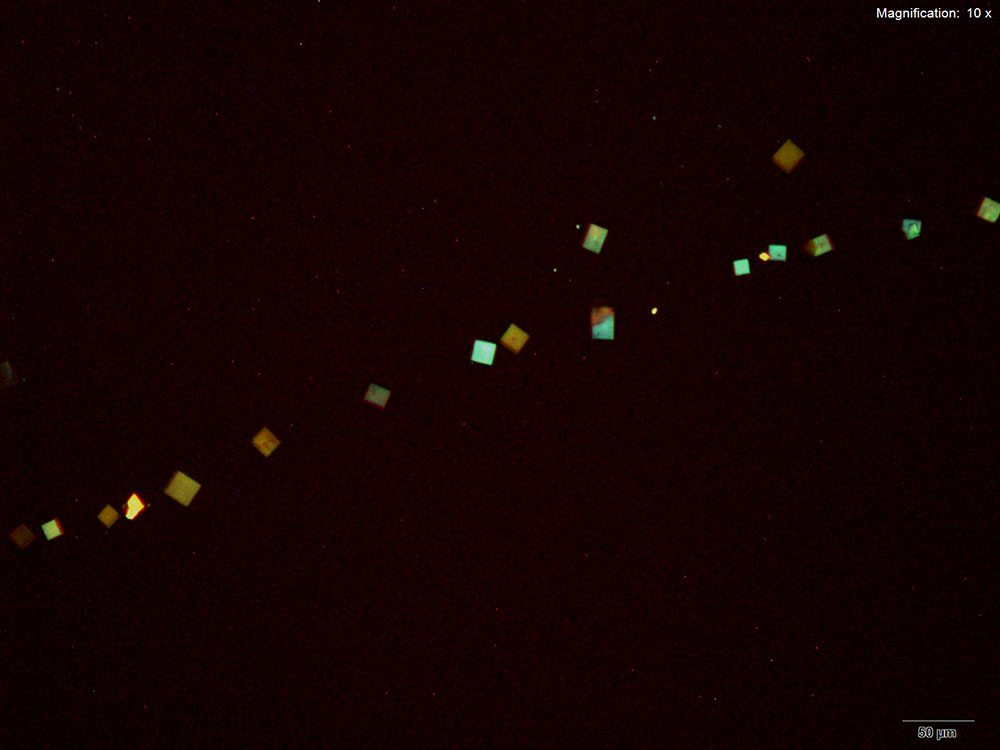BZP
![]()
5% Aqueous HAuCl4
BZP forms colorless, large, light square plates. The plates are very light and are best photographed with a cover slip. The square plates appear a light blue under crossed polars but only when they are suspended in the drop and not in the same plane as the glass slide. Like other tests for piperazines described in other section, this test is very sensitive and can easily overgrow at concentrations of BZP as low as 1 μg.
5% HAuCl4 in 1:2 concentrated H2SO4: H2O
With the acidic gold chloride reagent, the reaction is very similar to the aqueous gold chloride reagents. The flaky square plates are large with indented sides to appear as a cross with equal arms. The crystals appear yellow under crossed polars.
Gold Bromide (HAuBr4)
Gold bromide reagent forms yellow crosses with serrated edges that grow numerous. The test is very sensitive and the size of the crosses depends on the concentration. The crosses appear orange under crossed polars and can be easily visualized when not oriented flat along the plane of the slide.
Platinic Chloride (H2PtCl6)
Platinic chloride reagent forms small, colorless square plates in the drop. These plates can also be observed on the edges of drop with deformations. The size of the plates differs depending on if 10% hydrochloric acid or 10% acetic acid was used to dissolve the drug residue. Platinic chloride reagent by itself crystallizes as square plates on standing. They appear very similar to the drug-reagent crystal observed in this test. However, the drug-reagent plates can be differentiated from the reagent crystals under crossed polars. The reagent crystals are dark or faintly visible under crossed polars while the drug-reagent crystals appear bright white or yellow.
Platinic Bromide (H2PtBr6)
Platinic bromide forms yellow, square to rectangular plates with BZP. The plates tend to overgrow and traces of analyte should be used to observe the characteristic shape. The crystals tend to have indented corners when they grow very close to each other. Depending on their orientation, the plates may appear very faint to pale yellow to pale blue under crossed polars.

